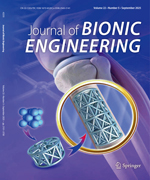Microstructures and corrosion of TiNbTaZrMo (Ti20Nb20Ta20Zr20Mo20) High-Entropy Alloy (HEA) were investigated in the Simulated Body Fluid (SBF). Microstructure of this alloy was investigated by X-Ray Diffraction (XRD) and Scanning Electron Microscopy (SEM) techniques. Our observations confirmed the presence of two bcc phases as the major matrix as well as another minor phase in the microstructure of the alloy. Concentration of some elements, such as tantalum, niobium, and molybdenum in the dendritic branches and the presence of zirconium and titanium in the inter-dendritic branches were clearly evidenced by Energy Dispersive X-ray (EDX) analysis. Given importance of corrosion of implant alloys in the human’s body, electrochemical impedance and cyclic polarization tests were performed on the alloy in SBF. Through the corrosion tests, corrosion potential, current, and resistance were obtained as Ecorr = ?0.42 V, icorr = 0.34 μAcm?2, and Rp = 27.44 k ohmcm2, respectively. The results revealed that the rate of corrosion in TiNbTaZrMo HEA is about 26 times better than that of Ti6Al4V alloy. Also, both alloys had no pitting corrosion in the SBF solution.

 Table of Content
Table of Content
 Table of Content
Table of Content